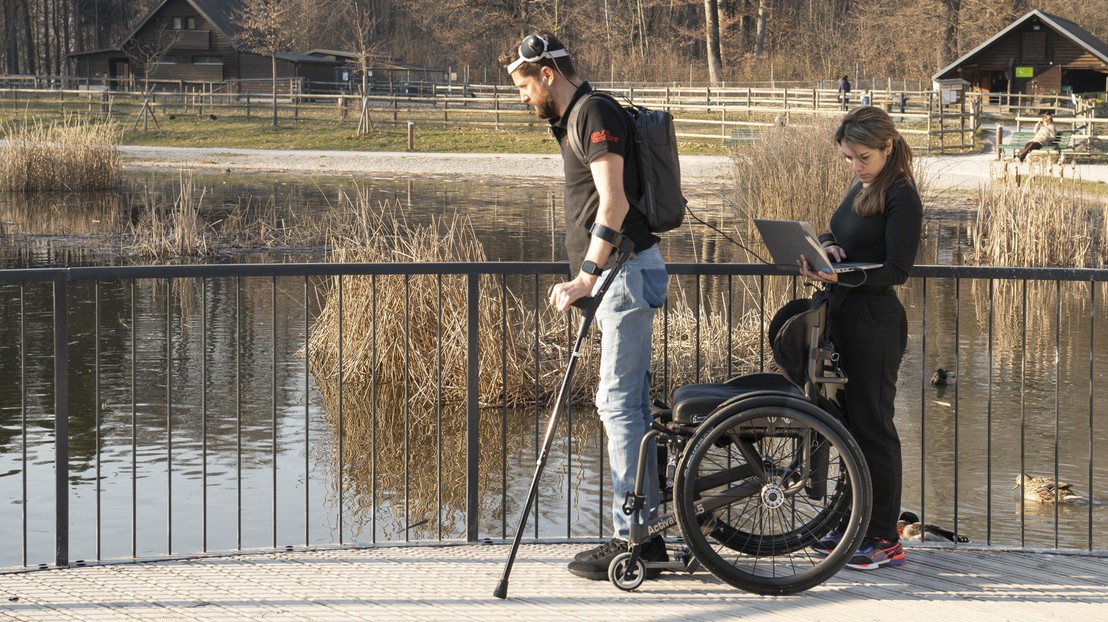Andrea Galvez wins EDEE Best Doctoral Thesis Award

© 2023 EPFL / Jimmy Ravier
Andrea Galvez, PhD student at Gregoire Courtine's lab in the School of Engineering has received the EDEE best Doctoral Thesis Award in Electrical Engineering for her thesis "Brain-controlled spinal cord stimulation to restore walking after spinal cord injury."
I’m proud to be recognized for these years of hard work by the EDEE doctoral program. While I’m being awarded individually, I must insist that the content of my thesis was the result of a team effort. I’m so lucky to have been able to learn from my colleagues and supervisors over the last years.

ABSTRACT:
Spinal Cord Injury (SCI) has a devastating impact on the motor control and affects many essential physiological functions resulting in dramatic human, societal, and economic costs with no treatment prespective. Lately, new technologies have emerged giving hope for rehabilitation therapies that aim to alleviate paralysis applying neuroengineering strategies.
We envisioned to establish a digital bridge between the motor cortex and the dormant neurons located in the spinal cord that are deprived of brain inputs due to a SCI. We hypothesized that this digital bridge between the brain and spinal cord enables volitional control over the timing and amplitude of muscle activity, restoring a more natural and adaptive control of standing and walking in humans with paralysis due to a spinal cord injury.
As part of this theses moving towards a clinically viable Brain Spine Interface, we investigated whether minimally-invasive recordings of electrocorticographic (ECoG) signals enable robust decoding of leg movements and can be integrated with spinal cord stimulation for daily use as a BSI in patients with severe SCI. We developed and conducted a First-in-human clinical trial using a minimally-invasive fully implantable epidural ECoG-based system called WIMAGINE. To bypass the spinal cord lesion, we decoded motor intention from ECoG recordings, and we translated the decoded motor intentions into stimulation commands delivered by the implantable pulse generator via an epidural lead targeting the different dorsal roots of the leg muscles which activated lower limb muscles following the natural flow of an intended movement.
This study assessed the long-term safety and preliminary effectiveness of a brain-controlled spinal cord stimulation therapy. The participant used the BSI system over a 40-session rehabilitation period and we evaluated the effect of the BSI system with clinical outcomes which shows functional recovery. At the end of this thesis we report for the first time the restoration of the communication with a digital bridge between the brain and the spinal cord that enabled an individual with chronic tetraplegia to stand and walk naturally in community settings. The participant reports that the BSI enables a natural control over the movements of his legs to stand, walk, climb stairs and even traverse complex terrains. This digital bridge establishes a new framework to restore natural control of movement after paralysis.